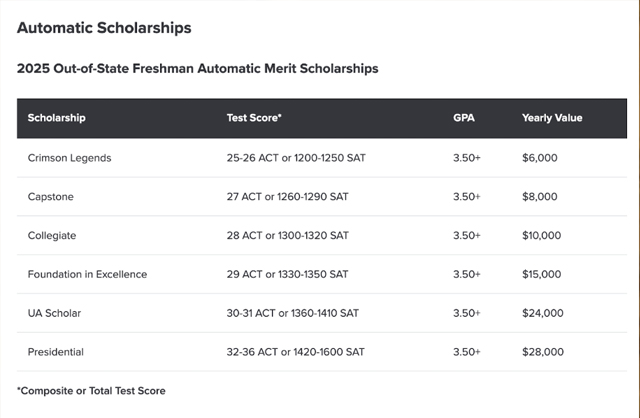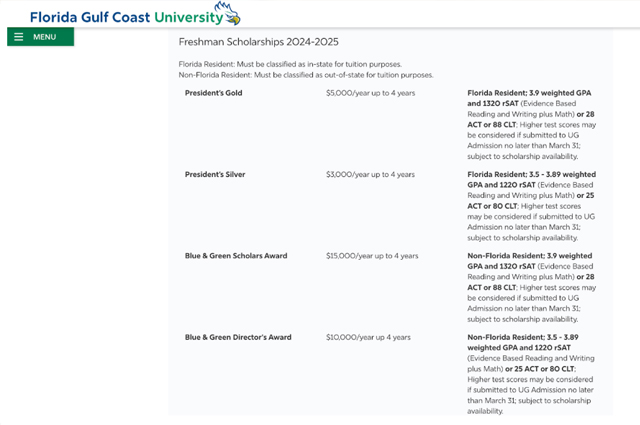
College tuition has been increasing in the last decades, and it is not lowering down any time soon. That's why getting a student scholarship may be a good way to save money. Yet, how high should your SAT score be for that? What do you need to aim for?
Let’s find out!
What Is a Good SAT Score to Qualify for Scholarship?
There’s no universal SAT score that guarantees a scholarship, but the short version may sound the next way: the higher, the better. That said, most merit-based scholarships start considering students with SAT scores around 1200 and up.
Here is a general SAT score system when it comes to scholarships (still, this will depend on your particular case and the school you choose):
- 1200–1290: These scores could open the doors for small or moderate scholarships at some public universities.
- 1300–1490: This result is a strong contender for merit aid at many schools. If you get such a score, you can aim for selected state universities or private schools.
- 1500+: This is a very strong score, which makes you competitive enough for top-tier scholarships. If you get into this score range, you may get full-tuition awards at elite institutions (if they offer merit-based scholarships).
Note: Many full scholarships are need-based and don’t require SATs. This is true for most elite universities, including the Ivy League.
Still, if you want to get a merit-based full scholarship, you need to do really well on the SATs. It means your preparation has to be very thorough. You can get ready for standardized testing by combining tutors, self-learning, or even AI-powered test prep platforms (Khan Academy, Acely, etc.).
Types of Scholarships Worth Considering
So, what kind of scholarships are there? Or, to put it differently, what academic merit do you have to demonstrate? Let’s explore these questions in detail.
What Is a Merit Scholarship?
We'll start with one important concept. As the name suggests, a merit scholarship is awarded based on a student’s achievements. Usually academic, but sometimes also for leadership, talent, or community involvement.
For example, the National Merit Scholarship Program offers three types of awards:
- National Merit $2500 Scholarships;
- Corporate-sponsored scholarships;
- College-sponsored scholarships.
The National Merit Scholarship is one of the most well-known scholarships tied to test scores — though it's based on your PSAT, not the SAT.
The whole journey looks like this:
- You take the PSAT in your junior year.
- If your score is in the top ~1% in your state, you may become a Semifinalist.
- From there, you can move on to become a Finalist and potentially win national scholarships.
The awards here can be different. For example, National Merit Finalists get a full-ride scholarship at some colleges, like the University of Alabama. At the same time, National Merit Semifinalists can get full tuition at other schools — for example, Washington State University.
It is easy to get the impression that the high school curriculum is way too important. Yet, merit scholarships often reward not only academic excellence or GPA. They also pay attention to leadership, extracurriculars, or community involvement.
How to Get Automatic Scholarships Based on GPA or Test Scores
Automatic (aka guaranteed or merit-based) scholarships are offered by many universities and are quite simple to qualify for. You automatically get the money if you get a high enough SAT. It also works for ACT, GPA, or class rank.
Typically, you only need to submit your admissions application and, sometimes, a scholarship form. Plus, you have to apply by a certain deadline to be guaranteed the scholarship. Other than that, you just have to hit the specific score.
Here’s how they usually work (this varies by school):
- 1200–1290 might get you $3,000 a year.
- 1500–1600 could land you $9,000 or more per year.
It is important to note that just a few years ago, lots of schools gave out these awards based on test scores alone. But now that many colleges are test-optional, some have switched to using your GPA (usually 3.0 to 4.0). Another criterion that automatic scholarships could be based on is class rank — for example, being in the top 25% of your class.
However, it all depends on a particular university. This is why knowing what university you want to target is vital. So, if getting financial aid is your priority, it’s really important to go through the official websites of every potential college and check their requirements.
Scholarship Eligibility Criteria Particular Universities Have
Let's take a look at a few particular cases to understand what minimum SAT scores you may need to secure financial aid.
The University of Alabama
The University of Alabama offers academic scholarships to students with SAT scores between 1200 and 1600. GPAs, on the other hand, have to be a minimum of 3.50.
When it comes to the ACT scores, the University of Alabama asks for an ACT score between 25 and 36 to be able to qualify for a scholarship. The amounts of support can be different depending on each student’s profile, ranging from $6,000 to $28,000 per year.
You can even get a full-ride scholarship, but these are typically reserved for National Merit Finalists, Presidential Scholars, or students with extremely high academic stats.

Source: The University of Alabama
Louisiana Tech University
Louisiana Tech University is another school that offers automatic merit-based scholarships. The range of eligible students varies depending on GPA and test scores.
In terms of high school GPA, awards are available to students with GPAs between 3.0 and 4.0. Some scholarships may be available with SAT scores between 1030–1120 or ACT scores between 20–22, though the options at the lower end of that range may be limited.
Depending on your academic performance, scholarship amounts can range from $1,000 to $9,500 per year.

Source: Louisiana Tech University
Florida Gulf Coast University
Florida Gulf Coast University offers merit scholarships to students with a GPA of 3.5 or higher. They consider an SAT score of 1220+ and an ACT score of 25+.
Scholarship amounts typically range from $3,000 to $5,000 per year for Florida residents and from $10,000 to $15,000 for non-Florida residents. The scholarship amount is larger for non-Florida residents because the tuition fee is also considerably higher.

Source: Florida Gulf Coast University
It is always rewarding to research the merit-based scholarship requirements at different schools. Each university typically has its own eligibility criteria. So, try to search around — you may be a good fit for a university you don’t even consider.
Yet, again, it is very important to remember that eligibility requirements may differ every year, so make sure to double-check the official website.
How to Boost Your Chances for a Scholarship?
If you’re chasing a scholarship, here’s what you can do:
- When it comes to SAT scores, try to aim as high as possible. A score above 1400 unlocks several competitive options for merit-based scholarships.
- Combine strong GPA and test scores. Many scholarships weigh both, so it's better to think about getting at least a minimum required GPA to have a chance of getting a scholarship. Plus, some might only consider GPA, so it’s a good idea to work on it as well.
- Don't forget to apply earlier. The reason for that is quite simple: some scholarships have early deadlines. They may close even before college applications.
- You don't have to choose just one thing. Combine private, state, and institutional aid. The more scholarships you apply for, the better chance you have.
- And, of course, prioritize your SAT preparation. Be consistent, work on your weaknesses, and choose proper SAT prep resources to get better standardized test scores in the end.
Conclusion
There are many academic possibilities available out there. And several of them are merit-based scholarships that consider SAT scores. Some universities may no longer require the test for admission, but they’ll gladly look at high scores when handing out aid.
So, research different colleges, find out what you should aim for, and prepare consistently. As a result, getting into a university you want (with a scholarship) will become your reality.
And don’t worry if you’re an international student. Many universities also offer scholarships based on SAT scores to applicants from around the globe. Good luck!











